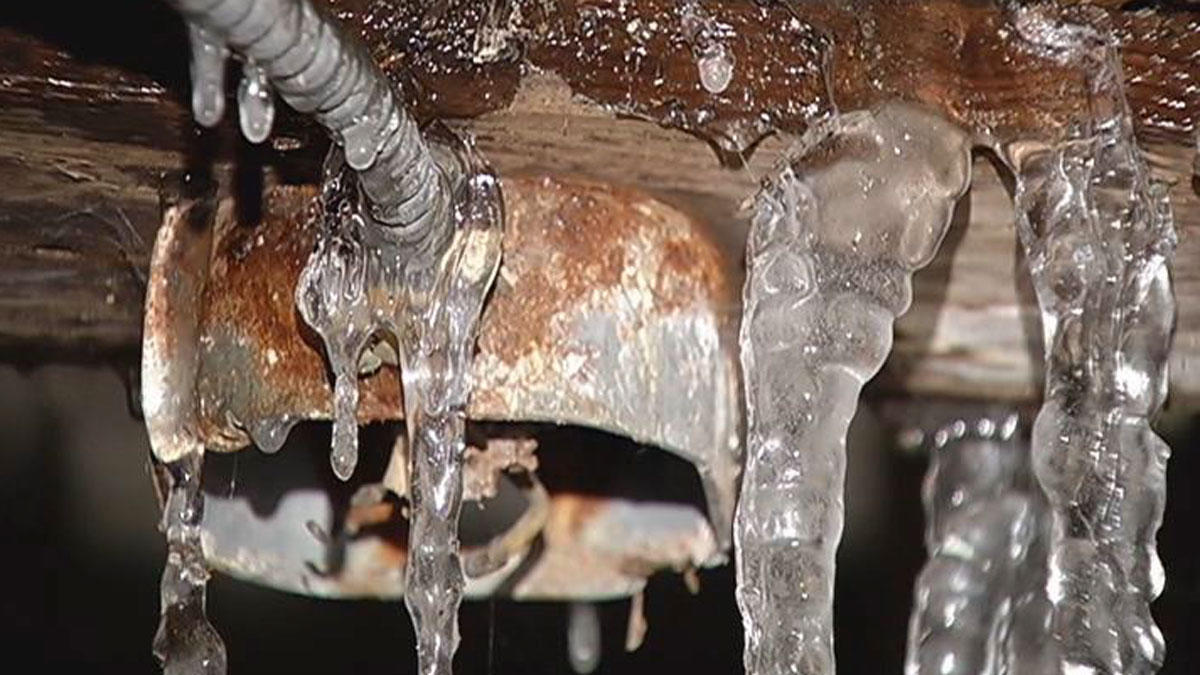How to Protect Your Pipes from Cold Weather Issues: Important Guidance
How to Protect Your Pipes from Cold Weather Issues: Important Guidance
Blog Article
Nearly everybody is bound to have their personal assumption when it comes to Prevent Frozen Pipes .

Winter can damage your plumbing, particularly by freezing pipes. Below's just how to stop it from occurring and what to do if it does.
Introduction
As temperatures drop, the threat of icy pipes increases, potentially bring about pricey repair services and water damage. Recognizing exactly how to avoid frozen pipelines is crucial for home owners in chilly environments.
Prevention Tips
Protecting prone pipes
Cover pipes in insulation sleeves or make use of heat tape to shield them from freezing temperatures. Concentrate on pipelines in unheated or outside locations of the home.
Home heating methods
Maintain indoor rooms properly heated up, particularly locations with plumbing. Open cupboard doors to enable cozy air to flow around pipelines under sinks.
Just how to recognize icy pipes
Look for reduced water circulation from faucets, uncommon smells or sounds from pipelines, and noticeable frost on revealed pipes.
Long-Term Solutions
Architectural changes
Consider rerouting pipelines far from exterior walls or unheated areas. Include added insulation to attic rooms, cellars, and crawl spaces.
Upgrading insulation
Invest in top notch insulation for pipelines, attics, and walls. Proper insulation aids preserve consistent temperatures and lowers the threat of frozen pipelines.
Securing Outside Plumbing
Yard pipes and outside faucets
Detach and drain garden hose pipes before winter season. Set up frost-proof spigots or cover outdoor taps with shielded caps.
Understanding Icy Pipes
What creates pipelines to freeze?
Pipelines freeze when revealed to temperatures below 32 ° F (0 ° C) for expanded periods. As water inside the pipes freezes, it increases, taxing the pipe wall surfaces and possibly triggering them to burst.
Threats and damages
Icy pipes can bring about supply of water interruptions, residential or commercial property damage, and expensive repair work. Ruptured pipes can flood homes and cause extensive architectural damages.
Signs of Frozen Pipes
Identifying frozen pipes early can stop them from bursting.
What to Do If Your Pipes Freeze
Immediate actions to take
If you suspect frozen pipelines, keep taps open up to soothe pressure as the ice melts. Make use of a hairdryer or towels soaked in hot water to thaw pipelines gradually.
Verdict
Preventing icy pipes requires positive steps and fast actions. By comprehending the causes, signs, and safety nets, home owners can secure their plumbing throughout winter.
5 Ways to Prevent Frozen Pipes
Drain Outdoor Faucets and Disconnect Hoses
First, close the shut-off valve that controls the flow of water in the pipe to your outdoor faucet. Then, head outside to disconnect and drain your hose and open the outdoor faucet to allow the water to completely drain out of the line. Turn off the faucet when done. Finally, head back to the shut-off valve and drain the remaining water inside the pipe into a bucket or container. Additionally, if you have a home irrigation system, you should consider hiring an expert to clear the system of water each year.
Insulate Pipes
One of the best and most cost-effective methods for preventing frozen water pipes is to wrap your pipes with insulation. This is especially important for areas in your home that aren’t exposed to heat, such as an attic. We suggest using foam sleeves, which can typically be found at your local hardware store.
Keep Heat Running at 65
Your pipes are located inside your walls, and the temperature there is much colder than the rest of the house. To prevent your pipes from freezing, The Insurance Information Institute suggests that you keep your home heated to at least 65 degrees, even when traveling. You may want to invest in smart devices that can keep an eye on the temperature in your home while you’re away.
Leave Water Dripping
Moving water — even a small trickle — can prevent ice from forming inside your pipes. When freezing temps are imminent, start a drip of water from all faucets that serve exposed pipes. Leaving a few faucets running will also help relieve pressure inside the pipes and help prevent a rupture if the water inside freezes.
Open Cupboard Doors
Warm your kitchen and bathroom pipes by opening cupboards and vanities. You should also leave your interior doors ajar to help warm air circulate evenly throughout your home.

Do you enjoy reading up on Helpful Tips to Prevent Frozen Pipes this Winter? Place a review down below. We would be happy to know your responses about this post. We hope that you visit us again soon. Sharing is nice. Helping others is fun. I cherish reading our article about Helpful Tips to Prevent Frozen Pipes this Winter.
Schedule Service Now Report this page